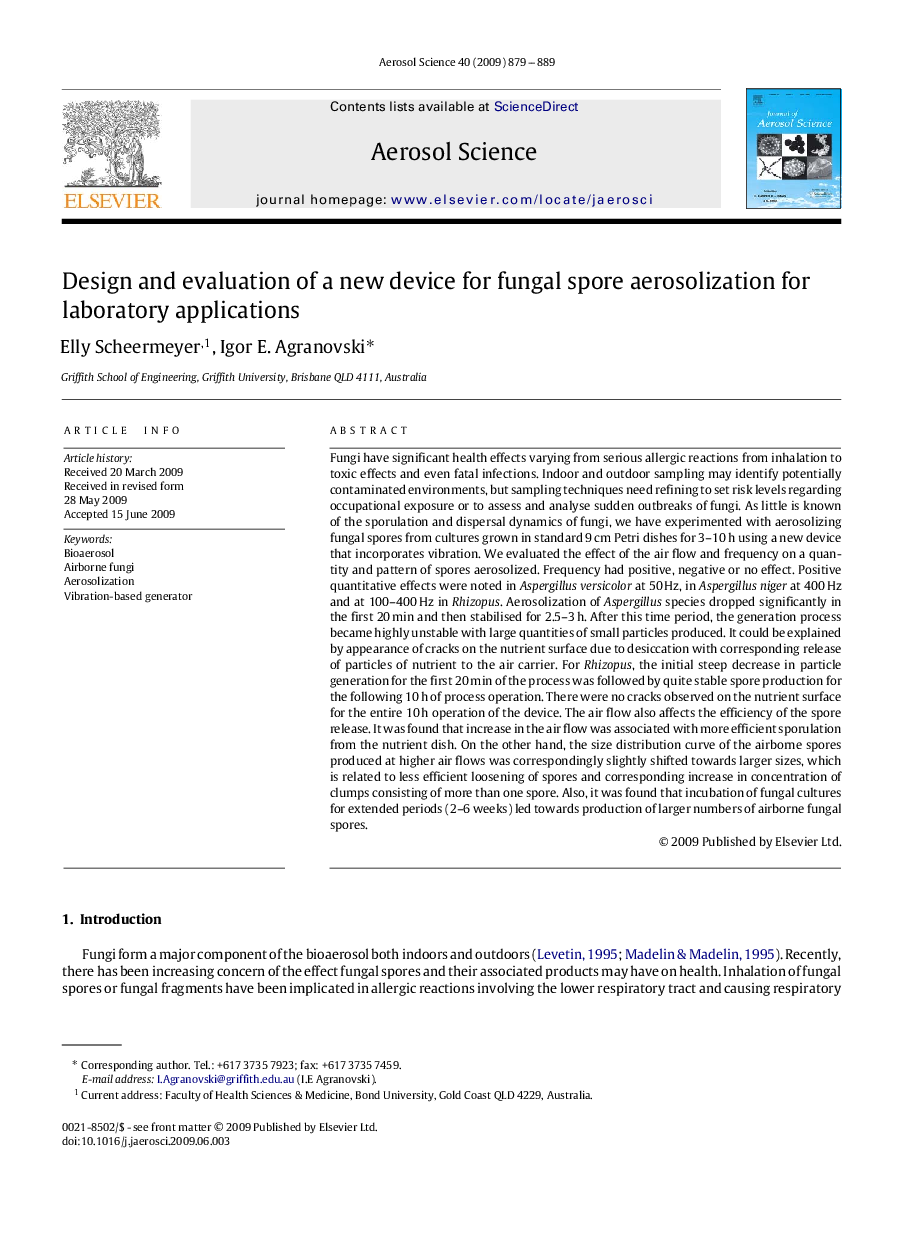| Article ID | Journal | Published Year | Pages | File Type |
|---|---|---|---|---|
| 4452970 | Journal of Aerosol Science | 2009 | 11 Pages |
Fungi have significant health effects varying from serious allergic reactions from inhalation to toxic effects and even fatal infections. Indoor and outdoor sampling may identify potentially contaminated environments, but sampling techniques need refining to set risk levels regarding occupational exposure or to assess and analyse sudden outbreaks of fungi. As little is known of the sporulation and dispersal dynamics of fungi, we have experimented with aerosolizing fungal spores from cultures grown in standard 9 cm Petri dishes for 3–10 h using a new device that incorporates vibration. We evaluated the effect of the air flow and frequency on a quantity and pattern of spores aerosolized. Frequency had positive, negative or no effect. Positive quantitative effects were noted in Aspergillus versicolor at 50 Hz, in Aspergillus niger at 400 Hz and at 100–400 Hz in Rhizopus. Aerosolization of Aspergillus species dropped significantly in the first 20 min and then stabilised for 2.5–3 h. After this time period, the generation process became highly unstable with large quantities of small particles produced. It could be explained by appearance of cracks on the nutrient surface due to desiccation with corresponding release of particles of nutrient to the air carrier. For Rhizopus, the initial steep decrease in particle generation for the first 20 min of the process was followed by quite stable spore production for the following 10 h of process operation. There were no cracks observed on the nutrient surface for the entire 10 h operation of the device. The air flow also affects the efficiency of the spore release. It was found that increase in the air flow was associated with more efficient sporulation from the nutrient dish. On the other hand, the size distribution curve of the airborne spores produced at higher air flows was correspondingly slightly shifted towards larger sizes, which is related to less efficient loosening of spores and corresponding increase in concentration of clumps consisting of more than one spore. Also, it was found that incubation of fungal cultures for extended periods (2–6 weeks) led towards production of larger numbers of airborne fungal spores.
